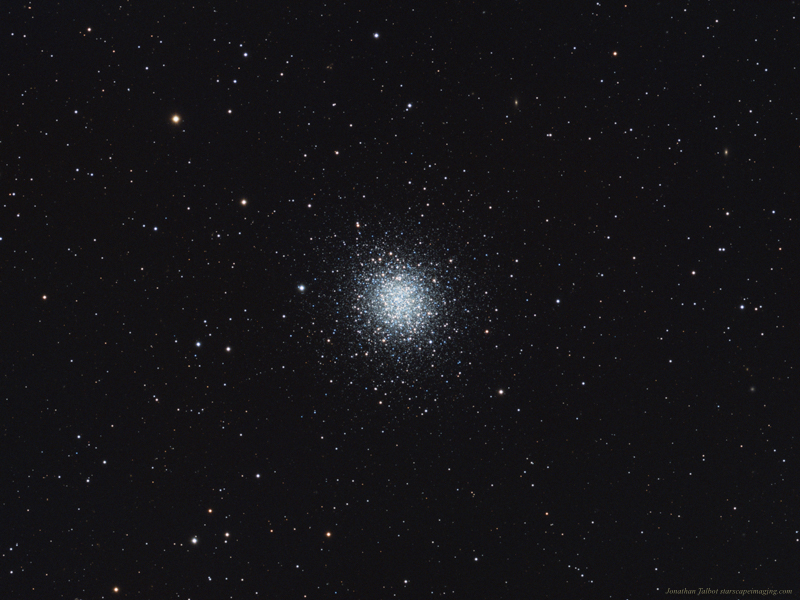
About this object
Messier 92 is a bright globular cluster in the constellation Hercules. Often overshadowed by the more popular Messier 13, M92 is rather bright and in a dark sky can sometimes be seen with the naked eye as a fuzzy dot. Along with a population of red giant stars it also seems to have an overabundance of blue stragglers. In the high resolution links below you can easily see all the tiny blue stars. Its 14 arc minutes in diameter and contains around 250,000 stars. Its one of the older globular clusters known with an estimated age of 14.2 billion years. M92 was discovered in 1777 by German Astronomer Johann Elert Bode.
Messier 92 is a bright globular cluster in the constellation Hercules. Often overshadowed by the more popular Messier 13, M92 is rather bright and in a dark sky can sometimes be seen with the naked eye as a fuzzy dot. Along with a population of red giant stars it also seems to have an overabundance of blue stragglers. In the high resolution links below you can easily see all the tiny blue stars. Its 14 arc minutes in diameter and contains around 250,000 stars. Its one of the older globular clusters known with an estimated age of 14.2 billion years. M92 was discovered in 1777 by German Astronomer Johann Elert Bode.
Larger size jpg images available here: 1920 pixels wide Full size: full resolution
Messier 92
Image Details
- Optics : Stellarvue SVX 152T refractor @f8 1200mm FL
- Mount: Paramount MYT
- Camera: QSI 683
- Filters: Astrodon
- Exposure (min): RGB: 225:155:165 using 5min subframes
- Camera/Mount Control: The Sky X, CCD Auto Pilot 5
- Guiding: SX Loadstar
- Processing: PixInsight 1.8,
- Location: Stark Bayou Observatory, Ocean Springs, MS
- Sky: Typical SQM 19.6-20.0, Bortle 5, Suburban
- Date: May 2019




